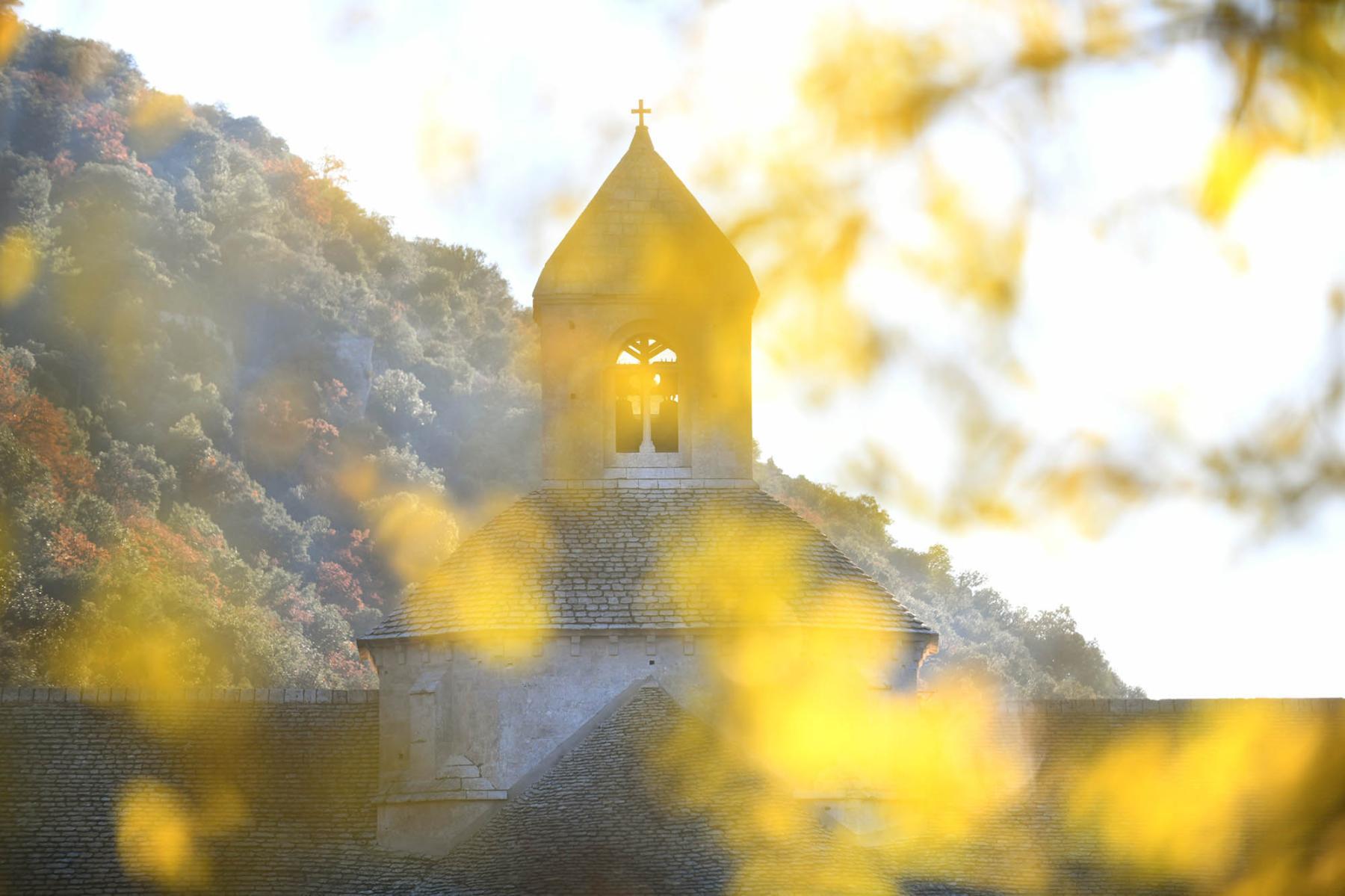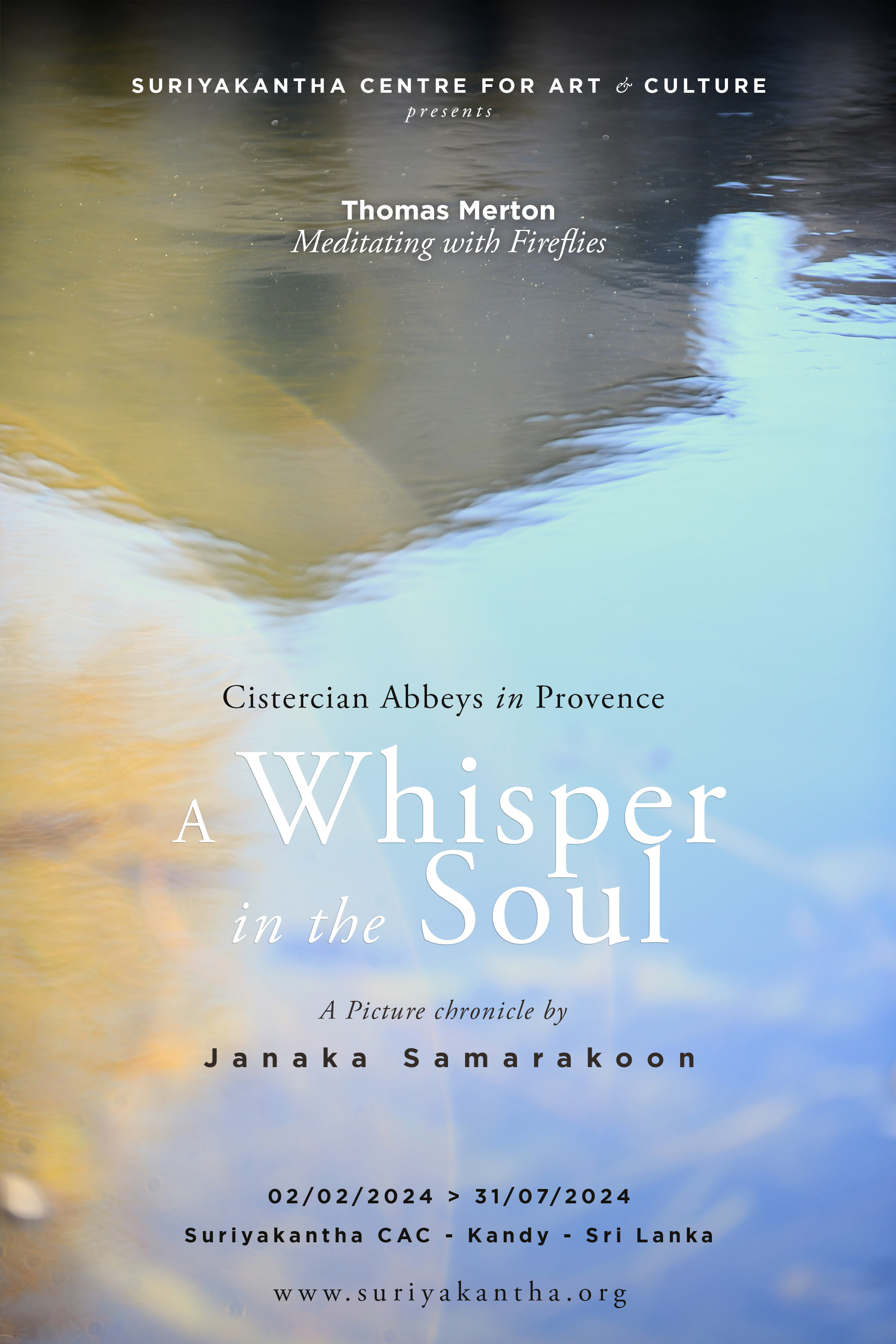A Whisper in The Soul - A Picture Chronicle by Janaka Samarakoon
2024 January 29

The photographic exhibition, "A Whisper in The Soul," is part of a Thomas Merton commemorative event "Meditating with Fireflies", organized by Suriyakantha Centre for Art & Culture and curated by Dr Jacques Soulié. The exhibition will be declared open on 2 February 2024 and will be followed by a cultural evening featuring live recitals and a multimedia screening.
I was born in Provence, in the summer of 2000. I was twenty years old…
This is, of course, a lie. But a true lie.
INTRODUCTION
For Jacques Soulié, the artisan behind this commemorative event, Thomas Merton is "a book discovered at a bookstall on the banks of the Seine" that would introduce him to a like-minded, life-long companion. To me, the American monk is the one who would finally free me from my unconditional reservations about all things religious.
“A WHISPER IN THE SOUL”
Initially, as a skeptical agnostic towards any form of mysticism, it was not the Cistercian monk himself but rather the intrigue he sparked in Jacques that caught my attention. I contributed an article on this subject to the Suriyakantha center's website, drawing parallels between the lives of Fr. Thomas and Dr. Jacques—both in pursuit of the 'Other' and an 'Elsewhere,' both envisioning a potential synthesis of the East and the West. Spiritual and cheerful. The article continued: "In two imagined biographies, one can easily picture the two men sitting on a bench on the banks of the Tarn or in a courtyard in Saint Antonin, passionately discussing a subject as improbable as Sri Lanka or the spirituality tinged with the Buddhism of that distant country."
The proposal for this photographic chronicle in Provence came from Jacques too. I embraced it as a delightful gift he had concocted for me...
In the summer of 2000, I spent two weeks in Provence. This stay was a reward for winning a national poetry contest organized by the Alliance française network, of which I was then a student. The trip also marked my very first journey outside my native (is)land.
I returned transformed.
"MY DEAR PROVENCE"
Provence has been my first tangible contact with France, the Mediterranean civilization, and the broader Western world that I would embrace later as my abode, forging an intellectual and spiritual kinship. Since that foundational experience, Provence has remained a privileged geographical and mental territory for me.
In the summer of 2000, I spent two weeks in Provence […] The trip also marked my very first journey outside my native (is)land.
I returned transformed.
Ah, your name, embodied by two tightly-knitted syllables, 'Pro-Vence,' inducing a sensual, intimate lip movement and resonating with a murmuring pronunciation… An uppercase 'P,' as majestic as your awe-inspiring Sainte-Victoire mountain; a central 'V' like a chalice enclosing an inexhaustible source of earthly happiness; a final C, so sweet, so secretive.... Your name is a sesame to a lost Paradise evoking fleeting moments of eternity ; your sound is a languishing refrain, a magical formula.
This photographic expedition gave me a pretext to once again throw myself into the arms of my dear Provence!
WINTER PILGRIMAGE
I waited for winter to undertake the expedition. Originally coming from dazzling tropics, I have a true tropism for the European cold season. The winter landscape, for me, is of a sophisticated minimalism. Honeyed to perfection, both in color and quality, the winter light nuances without flattening. It is this light that I went to capture in Provence, against its famed abbeys. This lateral, almost horizontal light, admirably awakens the texture of those bare stones, making every roughness vibrate, like as many tangible proofs of the century-old lives of these Wise Ones.
After the overexcited summer crowd, the abbeys rest in winter. There, the passage of time takes the upper hand and resumes the work where the men, the monk builders, halted it almost a millennium ago. In silence, with an apparent immobility, the sacred site becomes once again an organic unity, communing with the elements and allowing itself to be shaped by the cycle of the seasons.

CISTERCIAN ARCHITECTURE
Cistercian architecture is a philosophical program. It adheres to the principles of the monastic order founded in 547 by Benedict of Nursia. They have as their maxim poverty, simplicity, and respect for the Rule of Saint Benedict. When the Cistercians opted for stone construction, they systematically adopted a plan, a technique, and a uniform execution. Although the plan of Cistercian abbeys reflects that of Benedictine abbeys that preceded them, the distinctive features of their architecture result from their choice of simplification, especially applied to churches. They are built with bare stones yet aligned with the utmost care. The walls are devoid of any decorative elements such as painting, sculpture, hangings, or superfluous furniture, presenting a complete pointed barrel vault without the addition of floors, galleries, arches, or cornices. It is simple, direct, and evident like a Gregorian chant. The principles of sacred music, as formulated by the pope Pius X in his famous Encyclical Musicae Sacrae Disciplina, seem to reflect Cistercian art as well: holiness, truth of art, and universality.
While being Romanesque, Cistercian churches remain, thanks to the use of the newly discovered pointed arch, imposing structures. The single nave, without side aisles, rises thus to impressive heights. Through this imposing, almost intimidating simplicity, the Cistercian architecture positions you face to face with the Ineffable, the Invisible, and the Infinite, as if to suggest the omnipotence of forces that surpass you—regardless of how you define them. It is an apparatus that fosters humility, silence, contemplation, and introspection.
It is this Cistercian spirit, as immaterial as a reflection of stained glass, projected onto the bare stone slab, that I tried to capture through my lens.
EPILOGUE
In these austere spaces, in front of this "Nothingness" they celebrate—a notion shared by both Christianity and Buddhism—I of course did not see any supranatural presence. But if, some day, I were ever to pursue one, I now know where to look.
Janaka Samarakoon - 31/01/2024 - Nice, France



